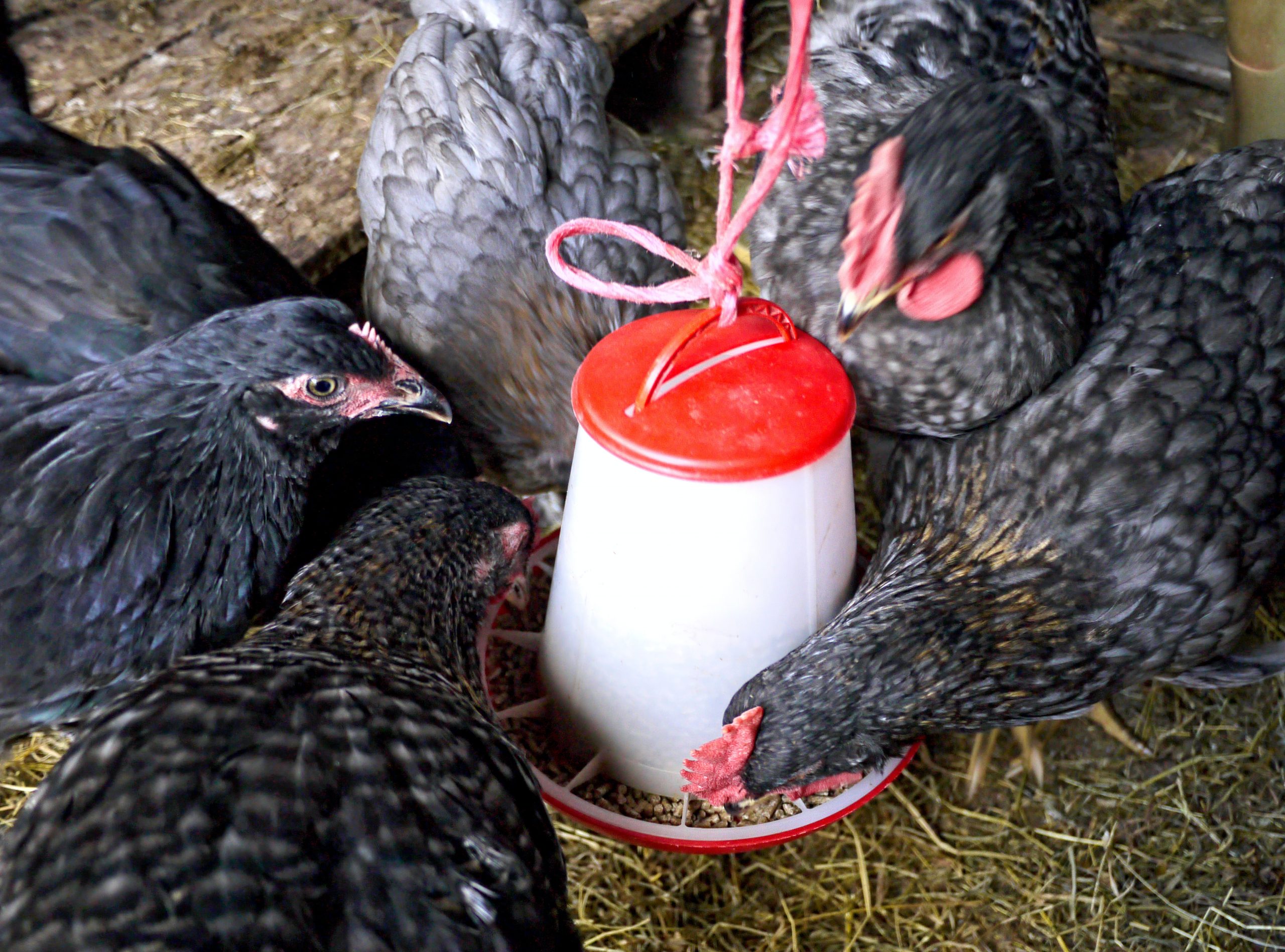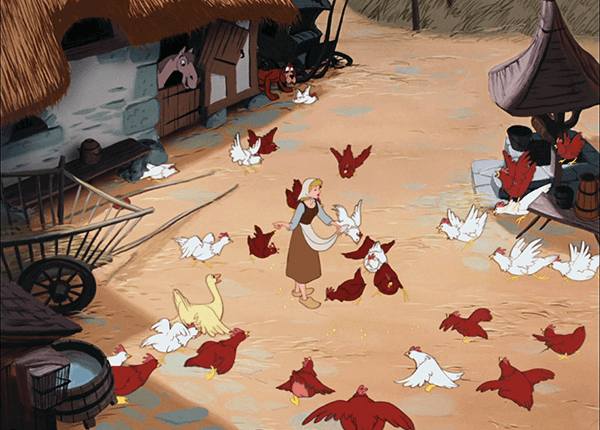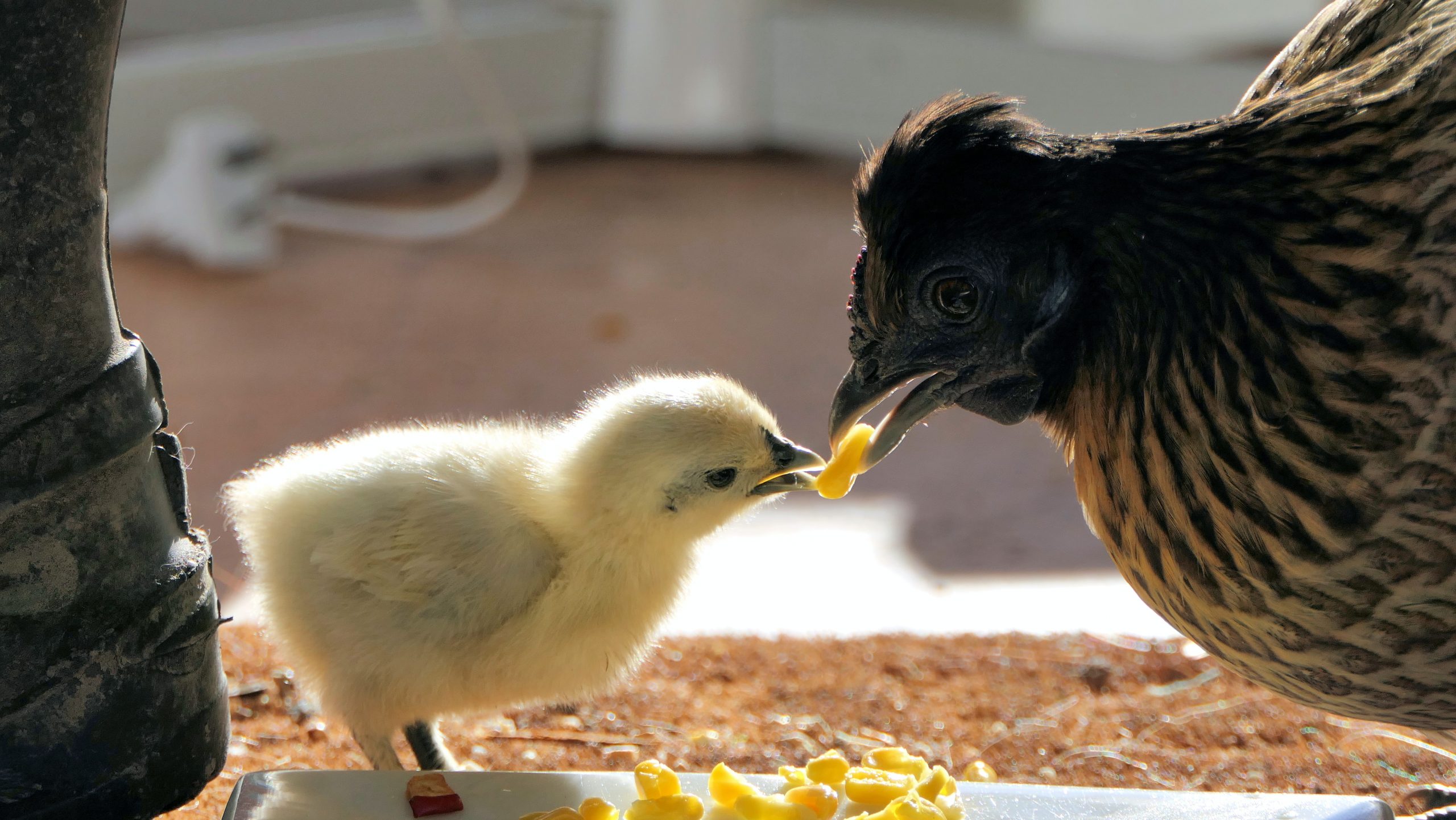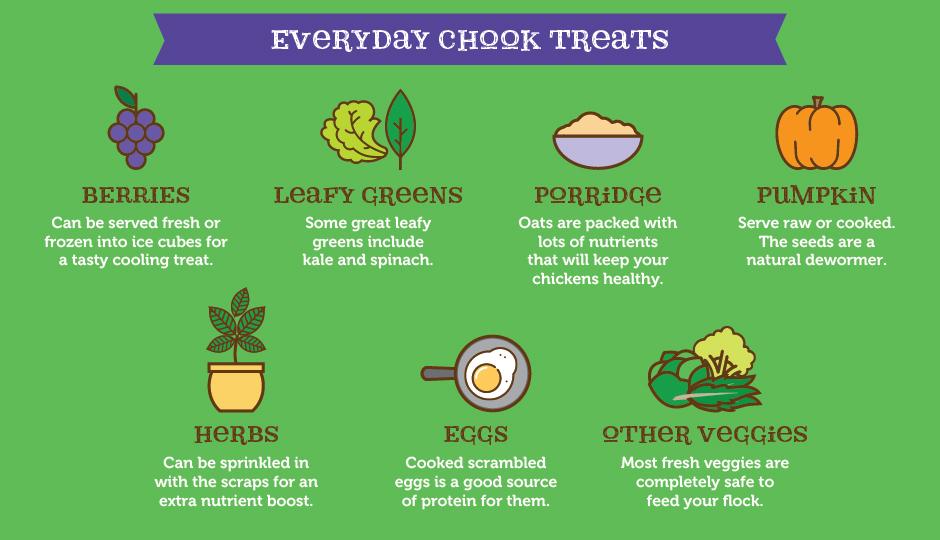Attention: Sometimes we receive a commission when you make a purchase through the links on our site.
Unlike a dog, who empties its food bowl in a matter of minutes, chickens eat small portions all throughout the day. You do not want skinny, unhealthy chickens but you also do not want hefty hens either. If you make sure they get enough essential nutrients, they will make sure you get plenty of delicious eggs.
It is common for people to feed their chickens once a day. A popular method is to feed your chickens once in the morning. Although, if you have a self filling feeder large enough, you can feed them as often as once a week.

Much like many of us humans, chickens are creatures of habit. Establishing a routine with feeding, watering, and play time will be very beneficial for your happy backyard flock.
To Free Feed Or Not To Free Feed, That Is The Question
Free feeding, or free choice feeding, is the most commonly used method of feeding chickens. Generally speaking, chickens do not overeat, especially if they have time to free range. So you can fill the feeder full and forget about it. Although some people claim they get better egg production by measuring their backyard chickens’ feed and only feeding them that amount. longbranch321 said in a forum at BackyardChickens.com:
“Here’s how you fine-tune your feeding to optimize efficiency. Start with a rate of 1/3 lb of feed per chicken. Record your numbers of eggs collected each day and calculate your average at the end of the week. Each week decrease the amount of feed by 10%. As soon as you see a reduction in numbers of eggs, go back up the previous 10% increment. So for example, if you start out feeding 10lbs, then the next week you’ll feed 9lbs, then the next week 8. If the next week you drop to 7 and at the end of that week you see you had a reduction in egg numbers for that week, then you would go back up to 8 pounds and stick with that as your daily ration.”
So it is up to you. Either way, as long as you are feeding your backyard chickens enough of a complete feed, you don’t need to worry.

Cinderella
A classic Disney movie. A classic scene. Cinderella feeding the animals their breakfast. Spreading corn out on the ground for the chickens to eat. Just have to remember: it is only a movie, it is only a movie… You can feed your chickens by spreading feed out across the ground. Chickens do like to scratch and peck. You run into two problems. The first being waste and the second being health concerns.
So first, waste. A bunch of that feed you spread across the ground is not going to be eaten especially if it is not pelleted feed. It will be small and be too hard for chickens to scratch and peck. Parts of the feed will be buried and left there. Then, second, health concerns. Any feed that does not get eaten is prone to getting moldy, which obviously isn’t good. Also, feed can be thrown into the chicken’s feces. This is especially true if the chickens do not have a large area to roam.
Also, Cinderella, corn is part of a chickens diet, but shouldn’t be their whole diet.
How To Feed
If you have decided to not spread your chicken’s food across the ground, a chicken feeder is recommended. If you CLICK HERE you can read our post about how to make a semi auto chicken feeder. These are a great option to reduce the amount of times you have to refill you feeder.
If you want to use something different, there are several options available. Two considerations I would look for. Look for something that hangs. This makes it so they can’t scratch the feed out of the feeder and waste it. Also, try and get something they can’t stand on and poop into the feed. That one is self explanatory.
You do not want too much crowding. Chickens have a hierarchy or pecking order and sometimes the bossy ladies will steal all of the food. If you notice this, adding another feeder is a quick solution to make sure everyone gets the food they need.
As the weather changes, so will the feed requirements of your backyard chickens. In the fall and winter months, they will need more feed to provide the energy needed to keep warm. In warmer months, there are more bugs and insects to eat which means they will need less feed from the feeder. So keep an eye on the feeder to make sure they have enough to eat and also to make sure what they don’t eat isn’t getting stale or moldy.

What To Feed
The easiest way to make sure you are feeding a complete feed is to purchase a commercially produced feed. The ingredients are mixed and then either put into crumbles or pellets. Nutritionally they are the same, they are just different textures. You can mix and match to see what kind your flock likes. Crumbles tend to have smaller pieces and even some very fine pieces that are “dusty.” This gives your chickens the chance to pick through more easily and get what they want to eat. Pellets are stored easier and not quite as messy.
We recommend a high quality feed. Make sure you check out MILE FOUR to get a good quality organic feed.
There are different types of feed for chickens at different stages of growth.
Starter or Chick Feed
You’ll feed this to a young chick up to six weeks of age. Chick feed is higher in protein than other feeds. You will typically see it in the 20-24% range. It is often medicated to help the young chick stay healthy.
Grower or Pullet Feed
You’ll feed this to pullets, which are between six and 20 weeks of age, or until they start laying. It has a bit lower protein with it being in the 16-18% range.
Layer Chicken Feed
You’ll want to switch to this feed once your pullets are laying, and are now hens. The protein stays about the same but now the hens need more calcium for the egg shells.
You can make your own feed for your chickens. You need to make sure it has the right ingredients for their nutritional needs. Getting your chickens feed right will keep them healthy and keep them laying eggs. The University of Georgia Extension did a pretty detailed write up. You can CLICK HERE to read it. If you are set on making your own feed, it is a great starting point to creating your formula.
What Else Do Chickens Eat
Chicken scratch is a popular item to have on hand. I would call it the McDonalds for chickens. It isn’t a complete food but more like a treat. Throwing it out in the yard will get your flock out and scratching around looking for something to eat but feeding too much scratch is how you get the hefty hens. While it is not a requirement, it is something you will see a lot.
As part of a chicken’s digestive tract, they have a gizzard. In the gizzard, food is grinded down into small pieces and then passes into the stomach. Chickens keep little rocks or pieces of grit in their gizzards to grind the food into smaller pieces. If your backyard chickens are able to roam or free range, they will most likely get all the small pieces of rock or sand that they need. If they are in a small chicken run area, or even if they free range, it is recommended to have a small amount of grit in another container or feeder.
Oyster shells help your laying hens raise their calcium levels. When they are laying eggs, they are depleting their calcium levels and need to replenish. Oyster shells are a great source for this. Another alternative is using eggshells. It is not cannibalism, I promise! Many people have a lot of success with eggshells while others choose to use oyster shells. If your backyard chickens are laying eggs with thin shells, I would say switch to oyster shells.
Don’t mix the shells with their feed. Too much calcium is harmful and should be avoided. Just like with grit, keep it in a separate feeder or container and let them eat it when they need it.
Water
Well, you don’t necessarily eat water, but water is very important for chickens. Make sure there is plenty of clean water available at all times. If you have colder winters, make sure the check your waterer in the mornings to break up any ice that forms overnight. You can also buy electric heaters made specifically to keep water from freezing. If you CLICK HERE, you be taken to our post with step by step plans to make your own waterer. It is a great way of having plenty of water without having to refill it all the time.

Treats
I could write a whole series of posts about chickens and treats. I will keep it simple by referring to the graphic above. It is a great, simple reference. Keep with the basic vegetable table scraps and you’ll be fine. I made a post about a cool way to give your chickens a treat. CLICK HERE to check it out. It also provides entertainment for you, the human, as well.
I hope you found value reading this post. Now you can answer “How Many Times A Day Should I Feed My Chickens.” Remember, sharing is caring and helps us keep growing here at BackyardChickensHQ.com
